Red Rosa
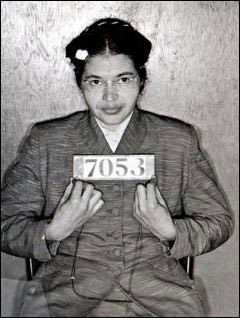
Background on Rosa Parks and the Montgomery Bus Boycott
by Jeff Hook
AS A VETERAN ACTIVIST, Rosa Parks earned a major role in a Communist production entitled “The Civil Rights Movement.” She played her part convincingly for fifty years, from 1955 to her death in 2005: that of the courageous little seamstress who refused to relinquish her bus seat to a White man.
Parks wasn’t the first Black to be arrested for refusing to move to the back of the bus, just the first to pass the audition. The other two candidates were rejected as wholly unsuitable as they exemplified the violent-prone nature and low-average I.Q. that makes segregation a necessity. More importantly, unlike Rosa Parks, they had not been properly inculcated in the writings of Karl Marx or tactics of the Party.
The Script
We are told that on December 1, 1955, Rosa Parks, a 42-year-old African American woman who worked as a seamstress, boarded a Montgomery City bus to go home from work. On that bus on that day, Rosa Parks initiated a new era in the American quest for freedom and equality.
She sat in the “Negroes Only” section, near the middle of the bus, just behind the 10 seats reserved for Whites. When the ten seats were filled, the driver ordered her to give up her seat so that a White man could sit there. Mrs. Parks quietly refused to give up her seat.
Her dignified action was spontaneous and not pre-meditated. “When I made that decision,” she said later, “I knew that I had the strength of my ancestors with me.”
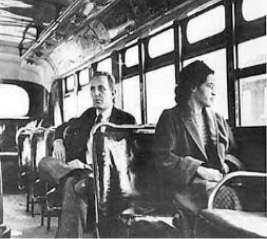
She was arrested and convicted of violating the laws of segregation, known as “Jim Crow laws.” Mrs. Parks appealed her conviction and thus formally challenged the legality of segregation. The arrest inspired local citizens who spontaneously initiated a boycott of the Montgomery bus system.
A group named the Montgomery Improvement Association, composed of local activists and ministers, organized the boycott. As their leader, they chose a young Baptist minister who was new to Montgomery: Martin Luther King, Jr.
Sparked by Mrs. Parks’ courageous action, the boycott lasted 381 days, into December 1956 when the U.S. Supreme Court ruled that the segregation law was unconstitutional and the Montgomery buses were integrated. The Montgomery Bus Boycott was the beginning of a revolutionary era of non-violent mass protests in support of civil rights in the United States.
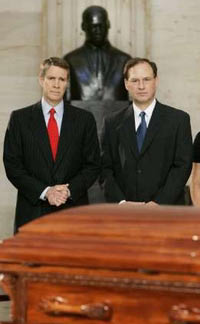
In the South, city buses were lightning rods for civil rights activists. It took someone with the courage and character of Rosa Parks to strike with lightning. And it required the commitment of the entire African American community to fan the flames ignited by that lightning into the fires of the civil rights revolution. By the sheer force of her will, she set in motion a revolution that continues to this day.
The Inconvenient Facts
On 2 March 1955, eleven months before Parks’ arrest, Claudette Colvin refused to move to the back of the bus. When Montgomery police arrested Colvin, she went kicking and screaming, hurling profanity at police and bystanders, and was charged with assault, disorderly conduct, and violating the segregation law. Colvin was eventually convicted of assault, fined ten dollars, and placed on probation for a year. The other charges were dropped.
The 15-year-old Colvin, described in numerous texts as being “prone to outbursts and cursing,” became pregnant by a much older man soon after the arrest. To this day, no one speaks of the unidentified rapist, and no charges were filed.
Colvin was active in the NAACP’s Youth Council, and mentored by none other than Rosa Parks.
“It was the organization that pushed her up front,” Colvin said later. “Police accused me of clawing them. I may have, I don’t remember. I was very emotional. I did have long nails.” [Detroit Free Press, 4 November 2005]
On 21 October 1955, six weeks before Rosa Parks, 18-year-old Mary Louise Smith was arrested for defying a bus driver’s order to relinquish her seat to a White man. She was released after paying a nine dollar fine.
Smith was a high-school dropout and housekeeper. Apparently illegitimate, she lived in a clapboard shack in the country with her father who was well known to the community as an abusive alcoholic. [Taylor Branch, Parting the Waters: America in the King Years 1954-1963.]
Long before Rosa Parks made her valiant stand, Jim Crow laws had been outlawed in interstate train travel, and Blacks in several Southern cities were busy picketing the practice of segregated bus systems. There had already been a major bus boycott in Baton Rouge, Louisiana, in 1953.
At the time of Parks’ arrest, standing by with bail money was her attorney, Clifford Durr, who entered a plea of ‘not guilty’ on her behalf. Photo-ops had been arranged.
Durr was a close associate of Jessica Mitford, an official of the Communist Party. In 1949, he joined the communist front National Lawyers Guild. He subsequently became President of the Guild. Later, Durr opened a law practice in Washington, D.C. representing federal employees who had lost their jobs as a result of the loyalty oath program. Durr subsequently represented Frank Oppenheimer, first director of Los Alamos National Laboratory, and member of the Communist Party.
Jo Ann Robinson, a Black activist who taught both high school and college at Alabama State, served as president of the Women’s Political Council (WPC) in Montgomery. She had devised the strategy for the bus boycott months before the Parks episode.
Robinson was tasked with printing and distributing leaflets condemning Parks’ arrest and announcing the bus boycott. More than 52,000 of the leaflets were on the street by the next morning. The official tale has Robinson “staying up all night typing and mimeographing.” [The Torchbearer Rosa Parks, by Rita Dove, Time Magazine’s 100 most important/influential people of the 20th century]
As Secretary and Youth Director of the Alabama chapter of the NAACP (National Association for the Advancement of Colored People), Parks was a seasoned activist. In actuality, she wielded great power in the chapter; she was the one who had noticed Martin Luther King Jr. and asked him to join the executive committee. She also participated in the meetings where the Montgomery NAACP leaders decided against using Colvin or Smith as the test case.
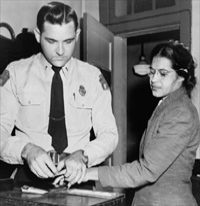
Prior to Rosa Parks’ planned arrest for violating the segregation law, the Alabama NAACP leadership arranged for her to attend the Highlander Folk School in Monteagle, Tennessee. Parks attended summer training there in 1955, 1956, and 1957.
In a letter to FBI Director J. Edgar Hoover, a field agent wrote: “This school is a hotbed of communism and anarchy. It is the opinion of this writer that this beloved East Tennessee is being ‘Honey-combed’ with communism and anarchy. And the Highlander Folk School is the hot-bed. If it were possible an agent of the Dept. should be sent there as a student. He would find that a statute was being violated — possibly treason.” [FBI memorandum, 3 April 1936, Highlander Folk School files, Freedom of Information Act release]
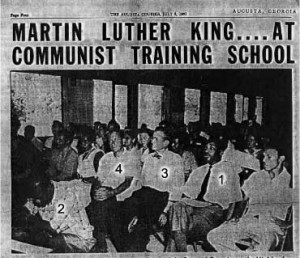
Another FBI memorandum to J. Edgar Hoover described the school, which was founded in 1932, as a “Communist front” whose purpose was to “better control their unions and to give instruction on how to cause and carry on their strikes.” A third memo described the school as “spreading Communist propaganda and training agitators and propagandists.”
In a book published in 1995 entitled, “Speak Now against the Day,” by John Egerton, the author writes: “Highlander had started summer workshops on school desegregation in 1954, right after the Brown decision. The Montgomery NAACP wanted to send a delegate to Highlander the next year. They chose their youth director, Rosa Parks.”
Mr. Egerton’s book contains a photograph of Parks at the school in 1957. However, according to Edgarton, her first training session took place only a few months before she sat down in the front of the bus in December, 1955.
After the boycott, the “little seamstress” moved with her husband to Michigan, where she became the manager of Congressman John Conyers’ office.
The NAACP
In 1909, the formation of the National Association for the Advancement of Colored People (NAACP) was urged by the leading left-wing radicals of the era. Moorfield Storey, an attorney from Boston, was recruited to be its first president (1910-1915). Storey was an active member of the Communist front Anti-Imperialist League.
From 1915 to 1939, the NAACP was dominated by Joel E. Spingarn who served as Chairman of the Executive Board, Chairman of the Board of Directors, and President. He was succeeded as president by his brother, Arthur Spingarn (1940-1966), who handed the baton to Kivie Kaplan (1966-1975). All three men were Jews.
The founding board of directors had only one prominent Black: W.E.B. DuBois, the organization’s director of publicity and research and the editor of its monthly magazine, The Crisis. Dubois hailed the Bolshevik Revolution of 1917, and he traveled to Moscow in 1926 and 1936. He especially liked the racial attitudes of the Communists, and was known for referring to Negroes as the “national minority” rather than ‘Black minority’.
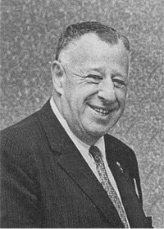
In 1923, the NAACP began to receive grants from the FBI-identified Communist front Garland Fund. Officials of the Fund included Moorfield Storey.
At the fourth national convention of the Workers (Communist) Party in 1925, the comrades were told that it was “permissible and necessary for Communists to enter NAACP conventions and make proposals calculated to enlighten the Negro masses to the nature and necessity of the class struggle…”
In 1928, the Communist International worked with the NAACP for a Negro-controlled State composed of all contiguous Southern counties having majority-Black populations — the so-called Black Belt. In 1930, the Communist International worked with the NAACP to organize the “Negroes of the South” for the purpose of setting up a separate state and government in the South.
Meanwhile, W.E.B. DuBois’ views were so overtly Communist, he became an embarrassment to the NAACP Jews who, of necessity, had to depend upon financial and other support from White America. In 1934, DuBois was booted from the NAACP, and devoted his energies full-time to working for Communist projects.

The departure of DuBois from the NAACP did not mean that the organization had moved away from Communism. In 1938, the NAACP was represented in the World Youth Congress, a Communist enterprise. And, in the 1940’s the NAACP was affiliated with American Youth for a Free World, the American affiliate of the World Federation of Democratic Youth, a Communist clearing house.
In 1953, an unusual and total endorsement was given to the NAACP by the Communists in their Daily Worker (September 30): “It should be clear that we Communists… should give every possible support to any and all campaigns conducted by the NAACP.”
Four years later, a similar endorsement appeared in the Daily Worker (February 19, 1957): “Communists in labor unions are thus pledged to get their unions to support the NAACP… Communists in communities are pledged to aid in increasing our membership and financial strength in the NAACP.”
In 1965, the NAACP joined with notorious Communist leaders to memorialize the passing of DuBois, who chose Communist Ghana as his burial site. In The Autobiography of W.E.B. Dubois, Dubois wrote: “I believe in communism… I believe that… wealth and services should be distributed according to need. Once I thought that these ends could be attained under capitalism. I now believe that private ownership of capital and free enterprise are leading the world to disaster. I know that the triumph of communism will be a slow and difficult task, involving mistakes of every sort.”
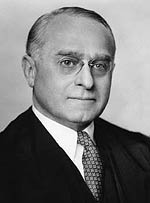
For ten years prior to his appointment in 1939 to the Supreme Court of the United States, the Jew Felix Frankfurter, an unreconstructed Bolshevik, served as legal adviser to the NAACP. That intimate association never deterred Frankfurter from sitting and writing decisions on cases where the NAACP was directly involved.
Frankfurter was a founding member of the American Civil Liberties Union (ACLU).
Frankfurter was credited with drafting the Balfour Declaration, the 1918 statement of the British government favoring the establishment of the Jewish homeland in Palestine.
On May 5, 1920, two Italian immigrants with ties to the Communist Party, Nicola Sacco and Bartolomeo Vanzetti, were arrested and charged with the robbery and murder of a paymaster and his guard in South Braintree, Massachusetts. The Communist International urged all Communists, socialists, anarchists, and trade unionists to organize efforts to rescue Sacco and Vanzetti who were convicted and sentenced to death. Comrade Frankfurter, then a law professor at Harvard, did more than any individual to rally “respectable” opinion behind the two men. He accused the prosecutor of exploiting the public’s fear of communism and prejudice against immigrants. The effort failed, and the pair were executed in the electric chair on August 23, 1927.
In 1917, early Black nationalist Marcus Garvey became famous for storming out of the NAACP’s headquarters proclaiming to be “dumbfounded” by the apparent domination of Whites. These “Whites” included Board Chairman Joel Spingarn, his brother Arthur who was pro bono counsel, Herbert Lehman of the Executive Committee, Arthur Sachs, Herbert Seligmann – director of public relations, and his secretary Martha Gruening. All Jewish. In later years, Jews had their revenge when Garvey ran into trouble with the law concerning his part-ownership of a steam line business. “I am being punished for the crime of the Jew Silverstone, an agent of the Black Star line,” he complained. “I was persecuted by Maxwell Mattuck, another Jew, and I am to be sentenced by Judge Julian Mack, the NAACP board member.”
The Highlander Folk School
Highlander Staff:

• Myles Horton – Director
Before founding the Highlander Folk School in 1932, Myles Horton — a member of the Young Communist League — was President of Commonwealth College in Mena, Arkansas. Commonwealth College was controlled by the Peoples Institute of Applied Religion, which had been organized by the Communist Party. [William Nolan, Communism Versus The Negro, Chicago, Henry Regnery Co., 1951, pp. 129-131.]
The purpose of Commonwealth College was to prepare people to infiltrate and influence the churches in the strongly religious South, indoctrinating them with Marxism expressed in religious jargon. Commonwealth College was closed by the state of Arkansas because it showed a lack of discretion. Among other odd practices, it flew the hammer and sickle flag.
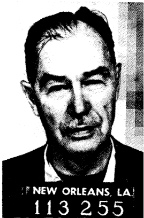
• James Dombrowski – Chairman
Dombrowski was Executive Director of the Southern Conference Education Fund (SCEF). The organization was an outgrowth of an earlier one, the Southern Conference for Human Welfare. In 1944, a congressional committee characterized the Southern Conference for Human Welfare in these terms:
Careful examination of its activities will disclose that the Conference is being used to further Soviet policy. Key posts are in most instances controlled by persons whose record is faithful to the line of the Communist Party. [Special Committee on Un-American Activities, Hearings on ClO Political Action Committee, March 29, 1944, p. 147.]
Cited again in similar terms in 1947, the Southern Conference For Human Welfare did a quick-change act and reappeared in 1948 as the Southern Conference Educational Fund. Surprise. The organization maintained the same headquarters, the same address, the same telephone number, the same publication, and the same executive director. [Activities of the SCEF, Inc., LA, part 1, Joint Legislative Committee on Un-American Activities, State of Louisiana, 1968, p. 2.]
The Senate Internal Security Subcommittee in 1954 described SCEF as “one of the Communist transmission belts” for the South — an organization through which the Communists send forth the Party line. [SCEF Hearings, Committee on the Judiciary, U.S. Senate, 1954, p. v.]
Dombrowski had approximately sixty citations from government investigating bodies of affiliation with various Communist fronts or Communist projects. Paul Crouch, who defected from Communism after serving for many years as the top U.S. Communist in the South, and who taught Revolution and subversion for the Communists in Moscow, testified before the Senate Internal Security Subcommittee as follows: “Dr. Dombrowski told me on several occasions that he preferred to be called a Left Socialist rather than a Communist; that he could serve the revolutionary movement better under the Socialist label than the Communist label.” Asked if that was a customary practice among top-flight Soviet operators, Crouch answered, “Yes sir.”
Crouch further testified that during a conference he attended with Highlander leadership, the following strategy was discussed: “The purpose was to work out a plan by which the Daily Worker would be made accessible to Highlander students, the instructors would refer to the Daily Worker and encourage the students to read it, and it was agreed that the Communist Party should have a leader sent there as a student. Mildred White, now in Washington, D.C., was selected to attend the Highlander Folk School for the purpose of recruiting for the Communist Party and carrying the Communist Party line among the student body there.”
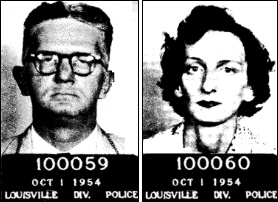
Working with Dombrowski was SCEF Field Secretary, Carl Braden and his wife Anne. In 1954 Braden was convicted and sentenced to fifteen years in prison for bombing the home of a Negro who had just moved into a White neighborhood, and for attempting to place the blame on the Caucasian neighbors — a frequent Communist tactic. During Braden’s trial for sedition, he and his wife were identified as Communist agents by Alberta Ahearn, an undercover FBI agent who had surfaced from the Communist Party to testify in court that Carl Braden was a southern district organizer for the Communist Party and national sponsor of the notorious Fair Play For Cuba Committee. [Congressional Record, 16 May 1968, pE4309]
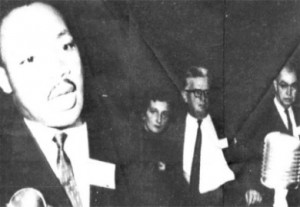
Ann Braden was also indicted for sedition by the State of Kentucky for her work with the Communist Party, prompting the ACLU to challenge Kentucky’s law against advocating a violent, Communist overthrow of the government. Within a year, the U.S. Supreme Court struck down Kentucky’s sedition law, and both Bradens were released. [Congressional Record, 16 May 1968, pE4752]
• Zilphia Horton – Wife of Director Myles Horton. Teacher of Music and Dramatics. Co-author of the Communist battle hymn “We Shall Overcome.”
• Richard Gothe – Youth Camp Director. Also Director of the American Youth Congress (Communist front). Described in FBI memorandums as “that commie kraut.”
Highlander Advisory Committee:
• Dr. Rev. Reinhold Niebuhr – Professor at Union Theological Seminary. Communist. Founder of the anti-National Socialist “American Friends of German Freedom.”
• Dr. Rev. Arthur Swift – Professor at Union Theological Seminary. Communist.
Note on the Union Theological Seminary: Rev. Harry Ward, Dean of the Union Theological Seminary in New York City was Chairman of the ACLU in 1920. In 1908, he was the founder of the oldest, officially-cited Communist-front group in America, the Methodist Federation for Social Action. A year later, he played a part in organizing the Federal Council of Churches, forerunner of the present day, National Council of Churches. Ward is described in FBI memorandums as “the Red Dean.”
• Mary Van Kleeck – Leader of the Women’s Trade Union League. Communist.
• Dr. George S. Counts – Teacher’s Union Organizer. In the early thirties, he wrote several books highly laudatory of the Soviet dictatorship, indicating that it had introduced a “new era.”
• Dr. Rev. Sherwood Eddy – Episcopalian. Communist. Union organizer. Advocate of birth control. In the spring of 1936 Eddy was flogged by a band of plantation owners for helping to organize a strike of the Georgia Cotton Picker’s Union.
• Franz Daniel – President of the Industrial Union of Marine & Shipbuilding Workers of America. Official of the Amalgamated Clothing Worker’s Union. Communist.
• Roger Baldwin – Founder and Director of the ACLU. Jew. Communist.
• Rev. William Spofford – Episcopalian. Textiles Union Organizer. Closely adhered to the Soviet line.
[Source: Stalin’s Christian Soldiers: The Hammer, the Sickle and the Cross, 1933-1953, by Jim Tuck. Perception Press, St. Augustine, FL. 2000]
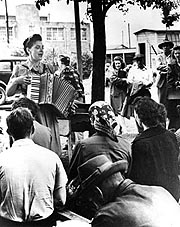
According to the Highlander Folk School brochure, their stated goals were: The creation of pamphlets, posters and other printed materials. Training in journalism, union organizing, union dispute resolution, democratic methods, and fund raising. Study of the philosophy and methods of the co-operative movement. To conduct plays and community discussion groups. To develop educational and cultural programs.
In 1960, Highlander had its charter revoked by a Tennessee court after State Police raided the school and made arrests for illegal possession of liquor, public drunkenness and disorderly conduct. Soon after, its buildings mysteriously burned to the ground.
The Props
On 1 December 2000, Rosa Parks was guest of honor when Troy State University Montgomery dedicated its ten million dollar Rosa Parks Library and Museum — a 55,000 square-foot facility that sits atop the spot where on the same day in 1955 Parks refused to relinquish her bus seat to a White man. (At least that’s what we’re told.)
The theme park/book store lovingly preserves the official version of events that resulted in Parks being crowned “Mother of the Civil Rights Movement.” They also sell hats, t-shirts, coffee mugs, and other memorabilia, not unlike a Holocaust museum.
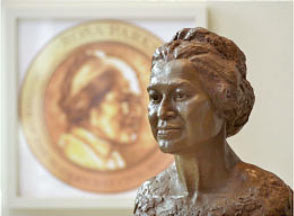
The facility includes an actual 1950s-era bus where visitors can hear a harsh recorded voice tell all Blacks to move to the back. The refurbishing of the 1956 General Motors transit bus took about nine months and cost $125,000. The federal government provided 80 percent of the funding and the city paid for the rest.
Montgomery Mayor Bobby Bright said that he hoped the bus would be a step toward bridging the racial gap in the city, which remains segregated, unofficially. “This bus not only is important to the black people in this community, but also to the whites,” Bright said. “We need to find a way to make an effort to unite the citizens of Montgomery and then the world.”

The city operates the bus as a ‘White guilt trip’ on the “Lightning” Route Circulator on Tuesdays through Saturdays from 9 a.m. to 6 p.m. The bus is also part of the transit system’s school outreach program to give school-age children a rolling history lesson of the bus boycott.
In 1996 Rosa Parks received the Presidential Medal of Freedom. In 1999, she was awarded the Congressional Gold Medal. Both are on display in Montgomery.
Rosa Parks is the first woman to lie in state in the rotunda of the U. S. Capitol. And now U. S. Sen. John Kerry (D-Mass.) has introduced a bill to memorialize Parks in the hall with a statue.

“It will emphasize, in no uncertain terms, the values that have broken down and the great contributions that African-Americans have made,” Kerry told reporters.
Kerry introduced his bill Nov. 3, the day after Parks was laid to rest after nine days of tributes, including a seven-hour funeral in Detroit and flags flown at half-staff.
“I can’t think of a person more deserving,” Kerry says. “Every American needs to be reminded of her legacy, and one way to keep her legacy alive is to remind everyone who walks through the Capitol — schoolchildren, families, members of Congress and presidents — that she refused to go quietly to the back of the bus, and we need to follow her example.”






when looking at the fotograpshs, on the internet,of rosa parks and dubois, they are not negroes, they look very white indeed, alhough many foto´s seems to have been made darker or they may have makeup or sunburn, they still look not african at all..the fotos of these ppl when they are old, give it away…but this article is a good window in to the decieving world of zio´s….